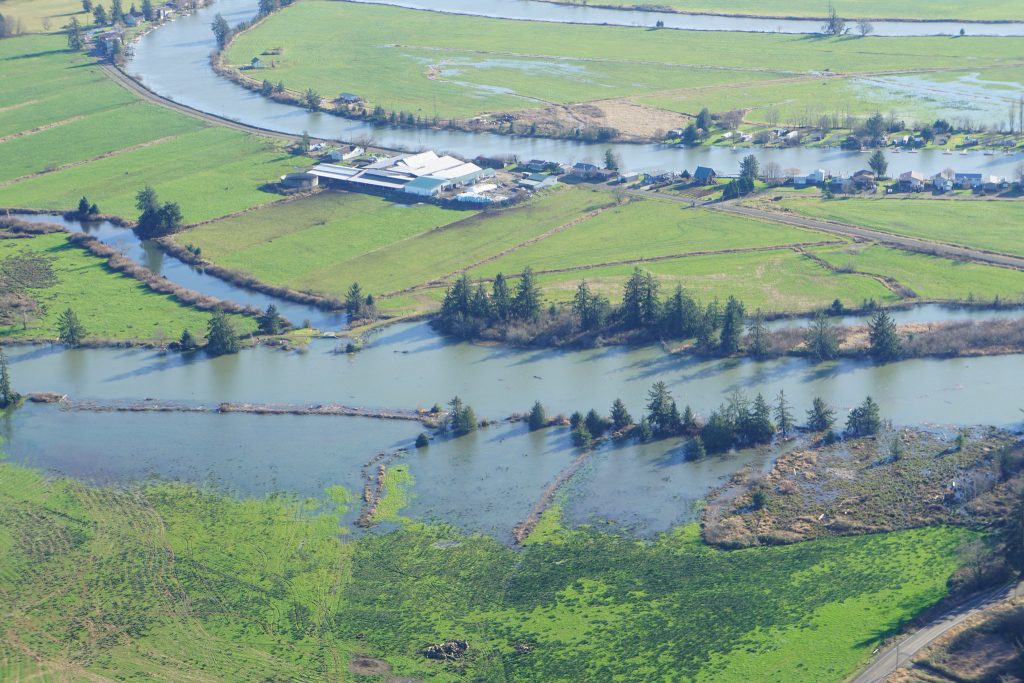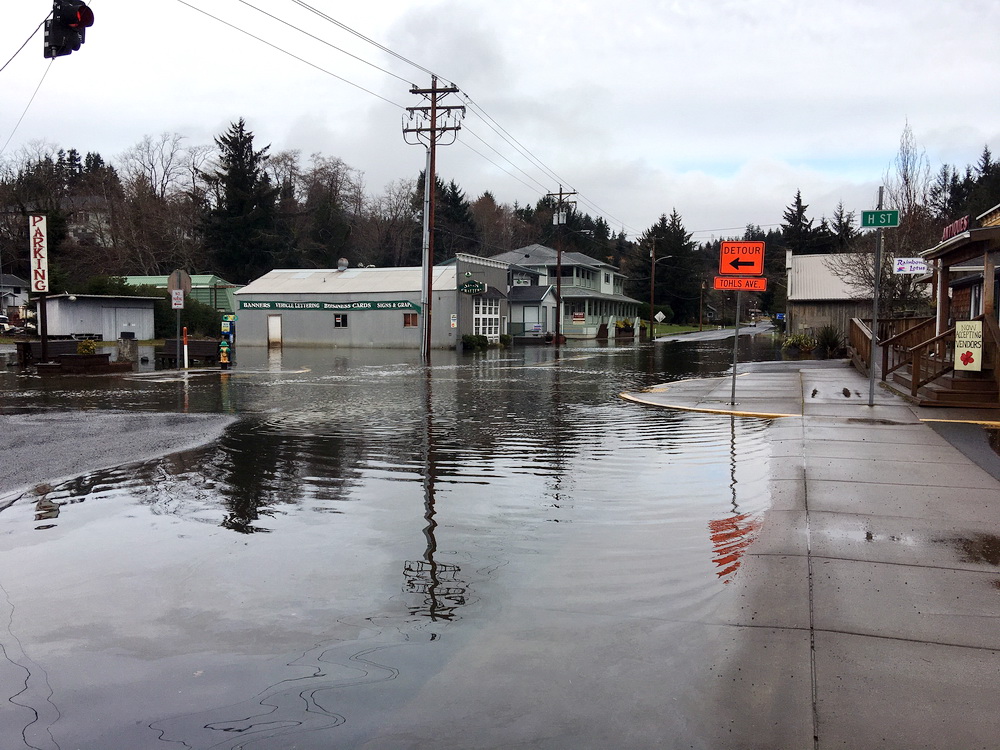The first round of the current winter’s king tides is coming up Nov. 25-27. Volunteer photographers are invited to assist in the Oregon King Tides Photo Project, a citizen science activity, by taking photos that document the highest reach of the year’s highest tides. The Oregon King Tides Photo Project takes place throughout Oregon’s coastal region.
As a prelude, the Oregon Shores Conservation Coalition is inviting everyone interested in the project or concerned about how climate change will affect the coast to a party. A “King Tides Project Kick-Off” is planned for Friday, Nov. 15, 5-8 p.m., at the North County Recreation District headquarters (36155 9th St.) in Nehalem. The party will feature food, photos from the last decade of the King Tides Photo Project, and a talk from oceanographer Francis Chan about ocean acidification and hypoxia and the climate impacts already being felt in Oregon’s ocean. This event is free and open to all. The event is co-sponsored by the Friends of Cape Falcon Marine Reserve.
Dr. Chan’s talk is titled “Science in a changing ocean: Ocean acidification, missing oxygen and adapting to global change.” Oregon’s coast is home to some of the ocean’s most productive ecosystems. These systems are undergoing profound changes. Oregon sits at the epicenter of the global challenges of ocean acidification and oxygen declines. In this presentation, Chan will expound on our current understanding of why these twin challenges are affecting our coasts, what the future will bring, and partnerships and opportunities for local actions to prepare Oregon for the changes ahead.
Dr. Francis Chan is an Associate Professor Senior Researcher in the Department of Integrative Biology at Oregon State University. He received his PhD in ecology from Cornell University. Dr. Chan’s research is focused on understanding the causes and consequences of low-oxygen (hypoxia) zones along the U. S. West Coast. He is also working actively to understand the progression of ocean acidification in coastal waters and their implications for productive coastal oceans. He is a co-principal investigator in the Partnership for Interdisciplinary Studies of Coastal Oceans (PISCO), based at Oregon State University, where he works to build long-term understanding of ocean ecosystem changes through nearshore ocean acidification and hypoxia monitoring efforts.

CoastWatch Volunteer Coordinator Jesse Jones will talk about the King Tides Photo Project at this event, and Margaret Minnick, the Friends of Cape Falcon Marine Reserve coordinator, will talk about marine reserves.
This is the tenth year that Oregon has participated in this international citizen science effort. The project is sponsored by the CoastWatch Program of the Oregon Shores Conservation Coalition and the Oregon Coastal Management Program of the Department of Land Conservation and Development, along with local partners.
The international project began in Australia, where the highest tides of the year are known as “king tides.” These tides arrive when the sun, moon, and earth are in alignment, causing a stronger than usual gravitational pull.
Anyone with a camera can participate. At high tide on any of the three project days (the timing of which varies, depending on location), find a safe spot to observe the tide in relation to the land, snap photos, and post them online. More information on the project, a link to tide tables, and instructions for posting photos, can be found on the website, http://www.oregonkingtides.net/.
King tide photos can be taken anywhere affected by tides, whether on the outer shoreline, in estuaries, or along lower river floodplains. Photos showing high water in relation to infrastructure (roads, bridges, seawalls, and the like) can be particularly striking, and reveal where flooding problems threaten. But shots of marshes or other habitats being inundated, or coastal shorelines subject to flooding and erosion, are also useful. The goal of this long-term citizen science project is to document the highest reach of the tides on an ongoing basis, for comparative study over a period of many years. (Photographers who participated in past years are urged to return to the locations from which they took earlier King Tide photos so as to track the tides in that location over time. Photographers are also urged to return to the same locations to take comparison shots at ordinary high tide.)
While the King Tides Photo Project can help to identify areas that are currently threatened by flooding, the more important purpose is to gain a preview of sea level rise. The king tides, while extreme today, will become the “new normal” as sea level continues to rise, and storm surges increase, due to global warming. Gaining a glimpse of tidal inundation likely to become common decades into the future will benefit planners, resource agencies, conservationists, and coastal citizens in preparing for these changes.
Photographs from past years of the King Tide Photo Project can be viewed on the project’s Flickr site, https://www.flickr.com/groups/oregonkingtides/.
For more information about this event or the King Tides Project, contact Jesse Jones, CoastWatch volunteer coordinator, at (503) 989-7244, jesse@oregonshores.org.


.png)